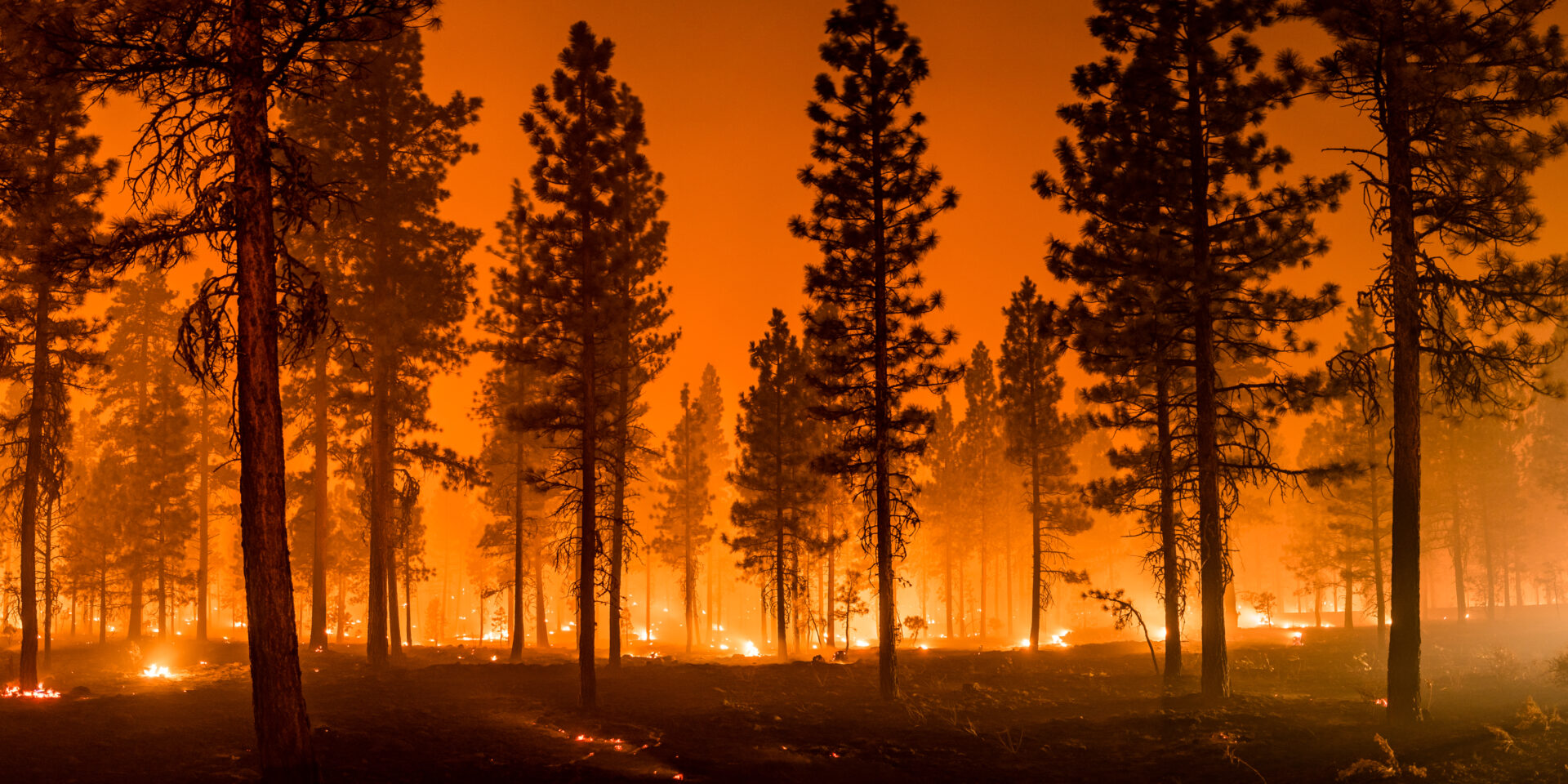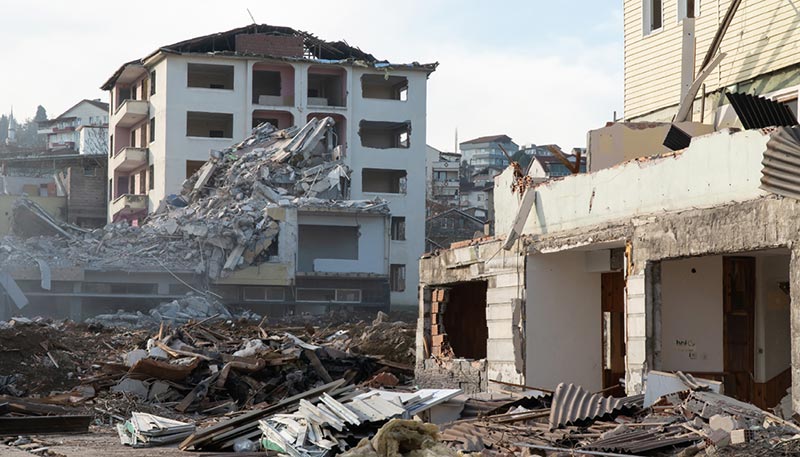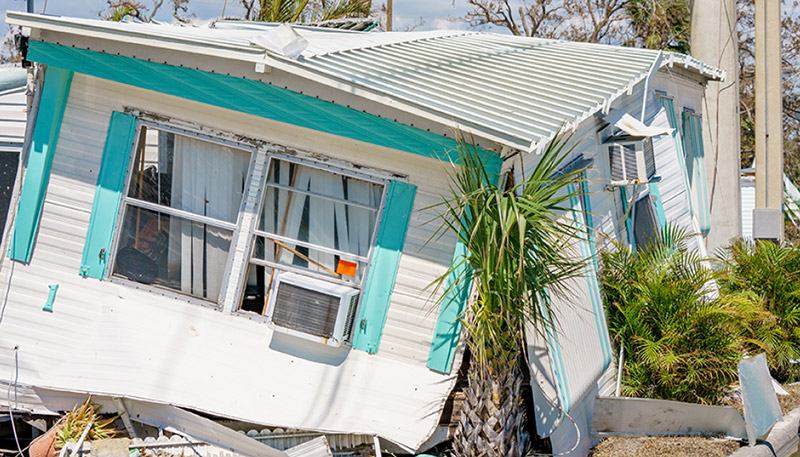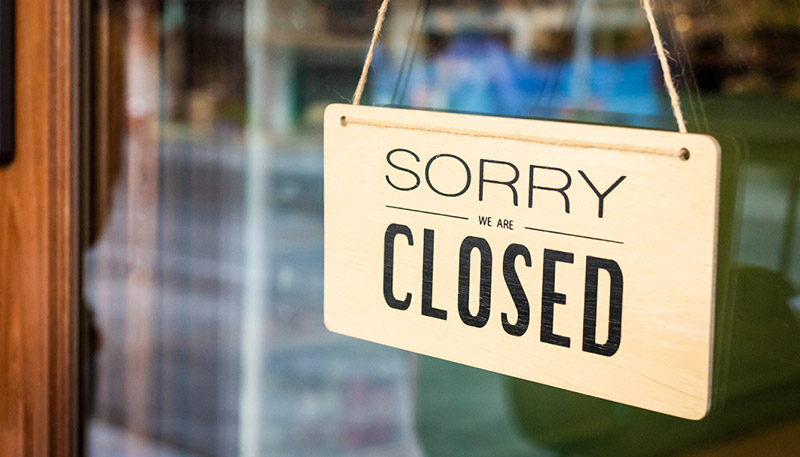Natural disasters can strike at any moment, leaving behind a trail of destruction and devastation. From hurricanes and earthquakes to wildfires and floods, these events have a significant impact on both homeowners and businesses. The possibility of a natural disaster occurring in your area is one of the most important reasons homeowners, businesses, and property owners of all types must purchase the right kind of insurance. In covered circumstances, natural disaster insurance coverage helps pay for the necessary repairs to restore a property to its pre-disaster status.
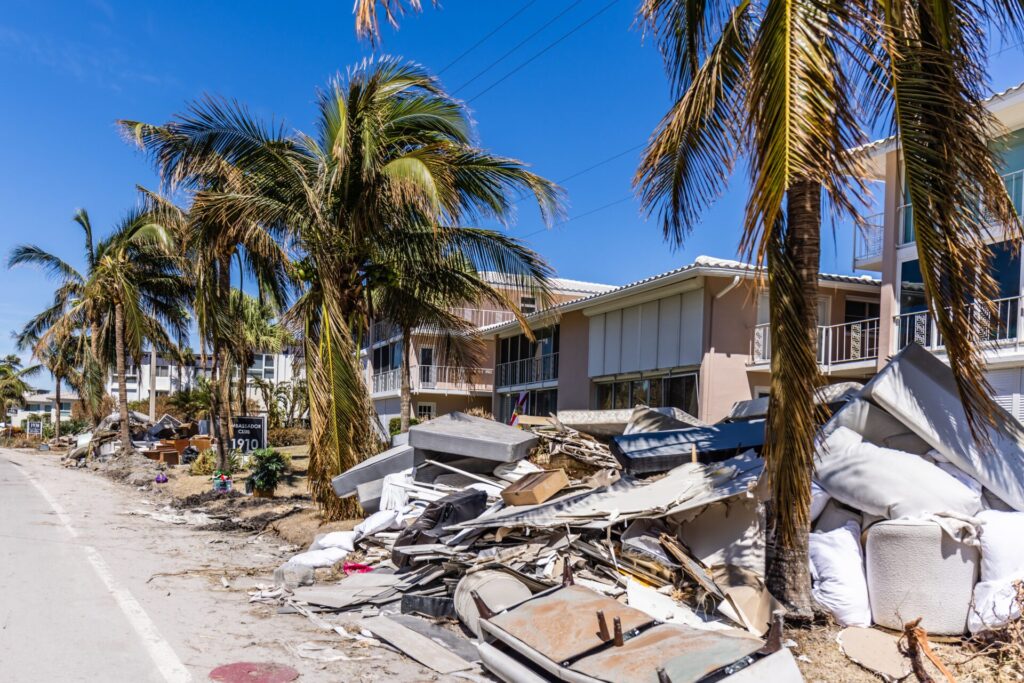
Hurricanes and Windstorms
Hurricanes and windstorms can cause significant damage to properties, as evidenced in destructive instances like Hurricane Katrina and Hurricane Sandy. Hurricanes cause both wind damage, such as ripped off roofs, as well as extensive flooding and subsequent water damage. The term windstorm, named storm, and/or hurricane may be used in insurance policies as an umbrella term that covers damage from a wind event. These specific terms could have an impact on coverage limitations and/or the applicable deductible.
Insurance Coverage
For homeowners, most homeowners’ insurance policies cover hurricane and windstorm damage. Business insurance that covers hurricanes and windstorms often falls under a commercial property insurance policy. Similar to homeowners’ insurance, this coverage protects physical assets, such as buildings, equipment, inventory, and other property, from damage caused by hurricanes or other windstorms.
Deductibles and Coverage Limits
In some coastal areas prone to hurricanes, insurers may have separate deductibles or exclusions for windstorm or hurricane damage. In those cases, homeowners and businesses need to purchase additional coverage, such as a separate windstorm or hurricane policy, to ensure they have the coverage they need to protect them due to the higher risk.
Even if hurricane damage is covered in an insurance policy, it’s important to note that some states in the U.S. have separate deductible requirements for named storms, such as hurricanes and tropical storms, meaning a property owner’s deductible could be higher for this type of damage. Named storm deductibles are typically between 1% and 10% of the home’s value.
Earthquakes
A big earthquake can lead to major devastation, but even a small earthquake can wreak havoc on a property that happens to be near the epicenter. Earthquake damage can be anything from a crack in a building’s foundation or broken windows to complete destruction of the property.
Insurance Coverage
Earthquake insurance is a specific type of coverage designed to protect against damage caused by earthquakes. In regions prone to seismic activity, standard homeowners’ and commercial property insurance policies do not usually cover earthquake damage. As a result, individuals and businesses in these areas should purchase a separate earthquake insurance policy to ensure coverage for losses resulting from earthquakes.
Earthquake insurance policies usually cover repairs to buildings and other structures, as well as damage to personal property caused by earthquakes. This coverage may also provide funds for living expenses if the property becomes uninhabitable due to earthquake damage.
Deductibles and Coverage Limits
Earthquake insurance coverage, premiums, deductibles, and specific terms can vary significantly based on the insurer, location, and the level of risk associated with earthquakes in the area. Residents and business owners in earthquake-prone regions should explore their options and consider purchasing earthquake insurance to protect their property and assets. An insurance claims public adjuster can help ensure property owners understand their coverage and their rights in the event of an earthquake.
Ice Storms
In cold climates, ice storms can cause significant damage. In addition to the issues that can occur because of extremely cold temperatures, such as frozen pipes, ice storms often lead to fallen trees and branches that are weighed down by accumulated ice.
Insurance Coverage
Coverage for damage resulting from ice storms is typically included in standard homeowners’ insurance policies and commercial property insurance policies. If the risk of an ice storm is common in winter, property owners should familiarize themselves with their insurance policies to make sure they are covered for any resulting damage.
Deductibles and Coverage Limits
As with other natural disasters, coverage limits for ice storms may exist in particularly high-risk areas, although these limits are less common than those associated with wildfires, flooding, and hurricanes. Because damage from fallen trees is a common claim related to ice storms, insured properties may run into limits if trees on the property were not properly maintained prior to the ice storm.
Wildfires
It’s no secret that wildfires can cause extreme damage to properties and endanger human lives. Although some amount of fire is a natural part of the ecosystem, the Environmental Protection Agency (EPA) has found that since the 1980s, the total area burned by wildfires has increased in the U.S., which means more properties are in danger of serious fire damage.
Insurance Coverage
In general, coverage for wildfire damage is typically included in homeowners’ and commercial property insurance policies. These policies usually cover damage caused by wildfires to structures like homes and buildings as well as personal belongings. Additional living expenses may be included if the property becomes uninhabitable due to fire damage, and landscaping and other property features are covered on some policies.
Deductibles and Coverage Limits
As extreme wildfires cause more damage each year, some insurance companies have limited their coverage for those who choose to own properties in high-risk areas. For instance, in 2023, two major insurance companies declined to insure more properties in California, citing an increased risk of wildfire damage as one of the reasons. When coverage is limited or damage is extensive, it can make sense for businesses to work with a public adjuster to maximize their natural disaster insurance claims.
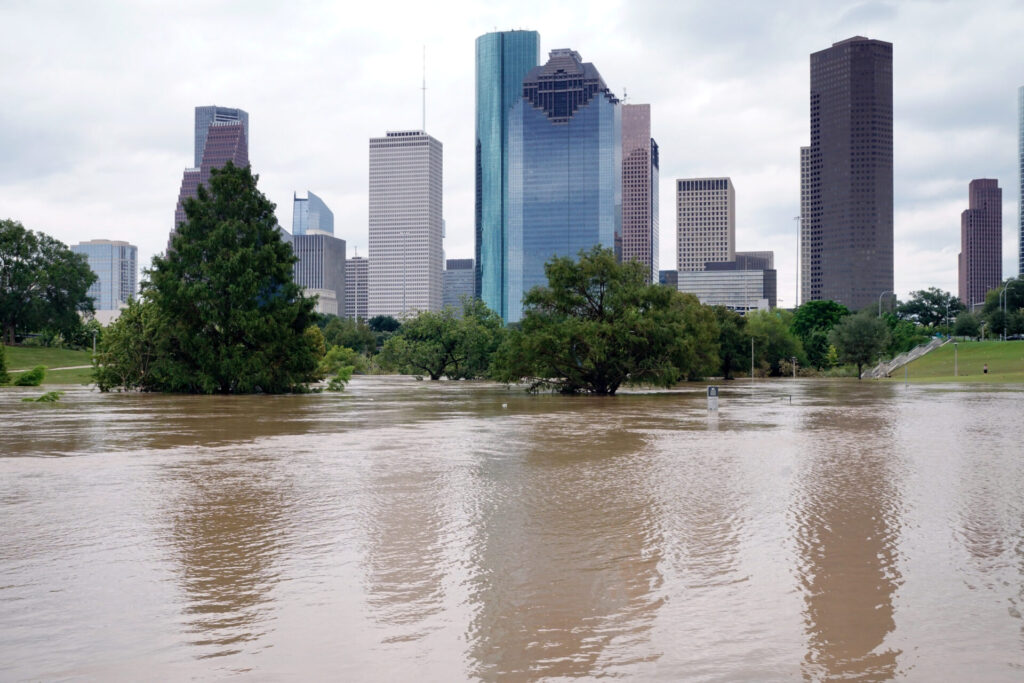
Floods
Flooding is the most common natural disaster in the U.S. Invading water can cause a great deal of damage to a property as well as to personal belongings, such as furniture and even cars. Water damage can be very difficult and costly to repair, so having proper insurance coverage for flooding is critical.
Insurance Coverage
Unlike many other natural disasters, standard homeowners’ and business insurance policies typically do not include coverage for flood damage. Instead, property owners must purchase separate flood insurance if they want to be covered for flood-related damage. Homes and properties with mortgages that are located in high-risk flood areas are required to have flood insurance.
Deductibles and Coverage Limits
The National Flood Insurance Program (NFIP) can help property owners understand and purchase flood insurance. NFIP partners with more than 50 insurance companies, including NFIP Direct, to offer flood insurance with a range of coverage options and deductibles, from $1,000 to $10,000. To purchase flood insurance through NFIP, the property must be in a community that participates in the program. Higher deductibles usually result in lower premiums, but it’s important for property owners to choose a deductible that they can comfortably afford in the event of a flood-related claim.
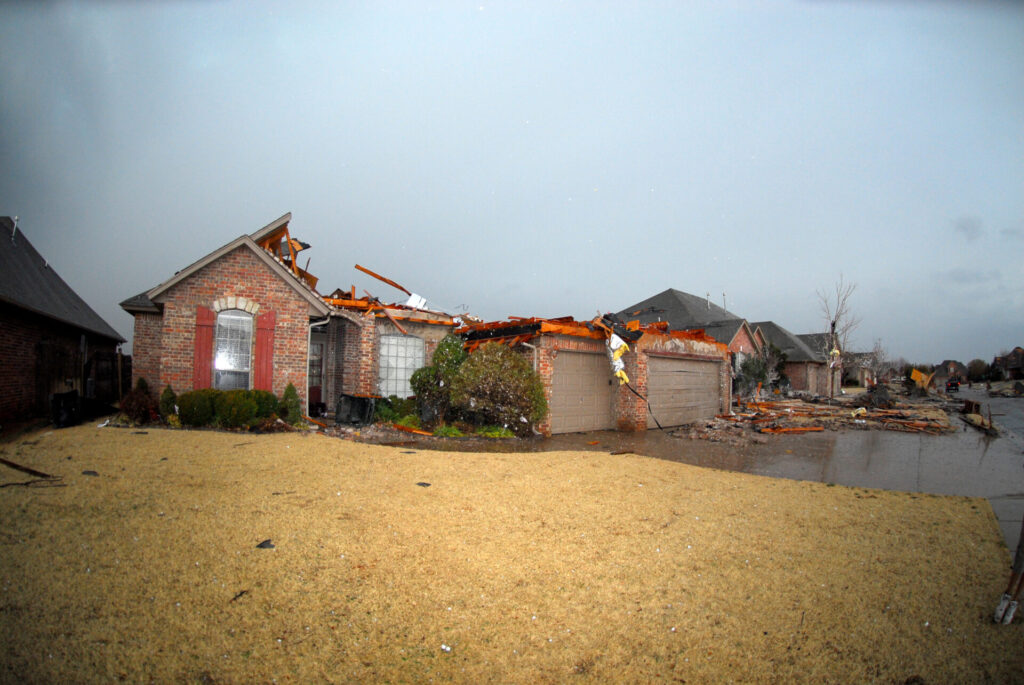
Tornadoes
Damage caused by tornadoes is typically covered by standard homeowners’ insurance and commercial property insurance policies. These policies often include coverage for all types of windstorms, such as tornadoes, hurricanes, straight line winds, and other similar weather events.
Insurance Coverage
Standard insurance policies with windstorm coverage cover structural damage to buildings, including homes and commercial properties, as well as damage to personal property caused by tornadoes. Tornado coverage may include repairs, reconstruction, and replacement of damaged structures and belongings.
Deductibles and Coverage Limits
As with hurricanes and the named storm deductible, some states have separate wind-related deductibles for tornado and wind damage. A wind damage deductible may be between 1% and 5% of the total value of a property.
Get Expert Help with Your Natural Disaster Insurance Claims
Navigating insurance claims after a natural disaster can be overwhelming. A natural disaster public adjuster like WorldClaim can help homeowners and businesses understand their policies to ensure fair compensation for any natural disaster damage that may occur. Reach out to us for help handling the complexities of your insurance claims.
